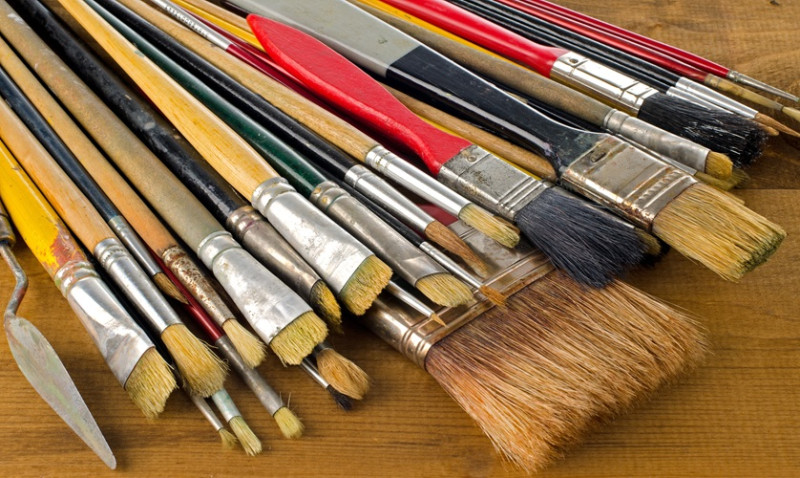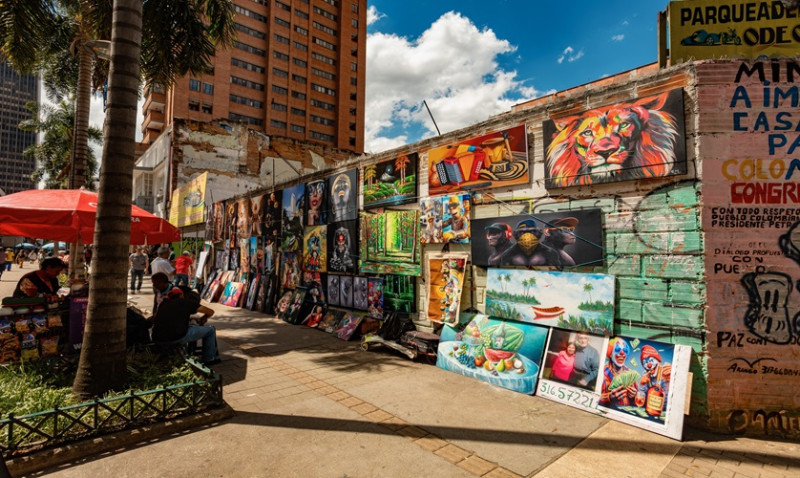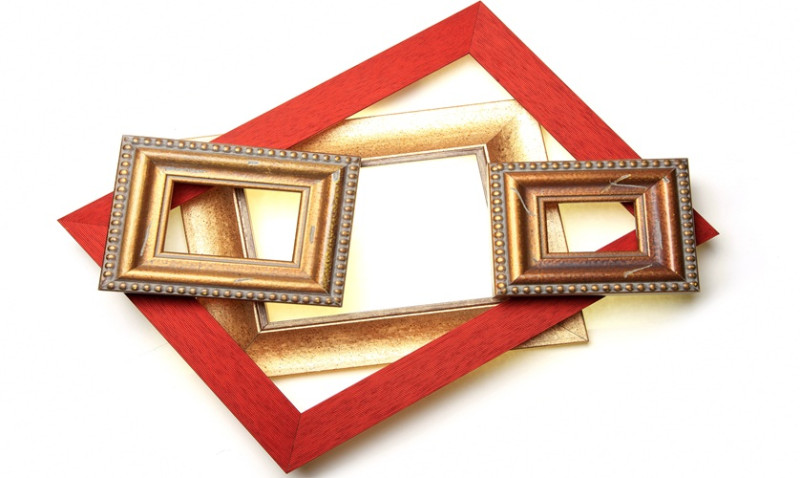
Street fairs across the United Kingdom are buzzing social hubs—and they're goldmines for artists and creators looking to sell their work directly to an engaged audience. Whether you're a professional illustrator, an interior decor brand, or a crafty DIY enthusiast, the potential to earn over £1,000 per day is well within reach. The key? Strategy, presentation, and understanding your customer.
In this guide, we share practical, profitable art vending tips tailored to creative entrepreneurs looking to succeed at UK's vibrant street fairs. You'll discover how to stand out in the crowd, optimize sales, and build lasting customer relationships that extend far beyond the event.
1. Know Your Audience and Choose the Right Fair
Before setting up your booth, research different street fairs across the UK. Some cater to general foot traffic, while others focus on artisan craftsmanship, vintage decor, or local art. For example, events like the Crafty Fox Market in London or the Afflecks Artisan Markets in Manchester attract a specific type of shopper—often young professionals, interior designers, and trend-sensitive homeowners.
Defining your ideal customer—whether it’s someone redecorating their flat, a designer sourcing decor for a client, or a curious DIYer—will help you align your offering for maximum impact. Visit fairs beforehand or speak with previous vendors about the crowd's buying interests and budget habits.
Also, consider the footfall and location advantages. A fair in central London or Edinburgh might have a higher pitch fee, but the volume and quality of your audience may justify the cost. Fairs near affluent residential areas where new homeowners and architects flock tend to result in higher ticket sales per item.
Keep in mind seasonality too—festive winter markets and spring home expos often generate significantly more traffic and cash-ready customers than events held in quieter months. Planning your tour around these seasonal peaks can significantly boost your takings.
2. Offer a Range of Price Points
To hit the £1,000+ mark in daily street fair sales, your art inventory needs to appeal to a variety of budgets. Aim to carry a mixture of low, mid, and high-ticket items. Not everyone is ready to invest in an original canvas or sculpture, but they may still buy an A4 print, greeting card, or mini decor piece.
Here’s a simple pricing tier strategy you can try:
| Price Range | Example Products | Purpose |
|---|---|---|
| £5–£20 | Postcards, DIY wall decals, greeting cards, stickers | Impulse buys, footfall converters, quick cash-ins |
| £25–£75 | Small framed prints, home decor pieces, handmade ceramics | Mainstream purchases; ideal for gifting and home styling |
| £100+ | Original art, large canvas prints, statement pieces | High-margin sales from collectors, designers, art lovers |
These tiers help attract a diverse crowd. While the lower-priced items keep your cash flow consistent, it only takes 3–5 premium sales to surpass your £1,000 goal.
3. Presentation is Everything—Design a Show-Stopping Booth
In a competitive street fair, the appearance of your booth defines your brand. Think of your stall as a mini retail shop—it should be visually compelling and convey professionalism within seconds. A cohesive brand aesthetic built around your artwork’s theme can draw people in from across the street.
Use elevated displays, gridwall panels, and tiered stands to showcase products at different heights. Avoid clutter—negative space is just as important as your merchandise. Use neutral-toned backdrops to let your pieces shine, and add warm string lights or soft spotlights for ambiance during evening hours.
Don’t forget signage. Price everything clearly, and include high-quality photos or banners showing your art in styled home settings. This appeals especially to your interior designer, DIYer, and tradesperson clients, who often purchase with specific room plans in mind.
Lastly, wear branded clothing and consider printing large portfolio books that display past commissions, customer reviews, or press mentions. Credibility sells, especially to design professionals and new homeowners looking to invest in art with story, depth, and reliability.
4. Accept Multiple Payment Methods and Make Checkout Easy
Your art could be breathtaking, but if your buyer can’t pay easily, you’re leaving money on the table. It’s critical to support contactless card payments, Apple Pay, Google Pay, and even PayPal QR code payments. Services like Square, SumUp, or Zettle are popular in the UK and easy to set up with your smartphone.
Keep a float of small change for cash-paying customers, but centralize your focus on digital payments—particularly for higher ticket items. Many professionals and designers budgeting a room redesign won’t carry large amounts of cash, and delays during payment can cost you the sale.
Offer the option for click & collect or local delivery if the item is large or fragile. Have padded carry bags or tubes ready for prints and bring backup chargers for all your tech. A glitchy card reader can mean a missed £200 sale—so plan ahead.
5. Offer Personalisation and Live Custom Work
One of the most exciting ways to increase booth sales is offering live customisations. Many DIY lovers and first-time homeowners want art that’s not just beautiful—but meaningful. Adding initials, dates, home coordinates, or a colour tweak makes your work instantly more valuable.
Set up a small working desk where you can customise prints on the spot with calligraphy pens, metallic foils, or acrylic finishes. People love watching the art being created—they often post it on social media, and it generates buzz and impulse sales from other visitors.
Also consider taking “design-your-own” preorders that ship later. Architects might want a minimal custom elevation sketch of a client’s building, or a tradesperson may be looking to gift a custom line drawing of a completed project. Have examples ready and use a simple order form or mini booklet to showcase options.
6. Build Your Initial Sale Into a Relationship
The best street fair vendors sell more than art—they sell experience, trust, and connection. Think beyond today. Every small print or £5 coaster is a gateway to a future larger sale, commission, or repeat client.
Use every transaction to build your email list. Offer a discount code for their next online purchase in exchange for an email sign-up. Many young professionals and homeowners are decorating their space over time—they may buy a small piece today and a large canvas next month.
Use business cards with QR codes that lead directly to your online shop or Instagram. Label your art with a discreet watermark so people who admire it in someone else’s home will know where to find the artist.
If you do custom works or business signage, let tradespeople and professionals know you’re available for commission. A painter buying a £30 wall print could later become your client for a £500 entrance sign or mural.
7. Perfect Your Pre-fair Checklist
Success at a street fair starts days before the event. A meticulous checklist can prevent last-minute surprises and create a stress-free, profitable experience. Key items to prep include:
- Card reader fully charged and tested
- Float in change (£50–£100 in coins and small notes)
- Tools: scissors, tape, cable ties, chalk pens, display hooks
- Protective coverings for unpredictable UK weather
- Food and drink for yourself—staying nourished = better sales energy
- Extra stock—bring 20% more than you think you’ll need
Make sure you also check pitch guidelines, location access times, vehicle passes, and promotional support provided by the organiser. Promote your own participation on social media a week before the event to generate early buzz.
Final Thoughts
Turning your passion for art into four-figure days isn’t just a dream—it’s a matter of smart preparation, engaging presentation, and understanding your buyers. The UK’s street fairs are filled with people actively seeking high-quality, unique pieces to complete their homes, client projects, or gift lists.
If you can bring heart to your brand, clarity to your sales process, and flexibility to your deals—you’ll not only meet that £1,000 goal, but build a thriving art business that grows beyond the booth.
Ready to unlock your art sales potential? Go forth, make beautiful things, and showcase them where your future buyers are waiting—on the high streets, markets, and creative corners of the UK’s best street fairs.






